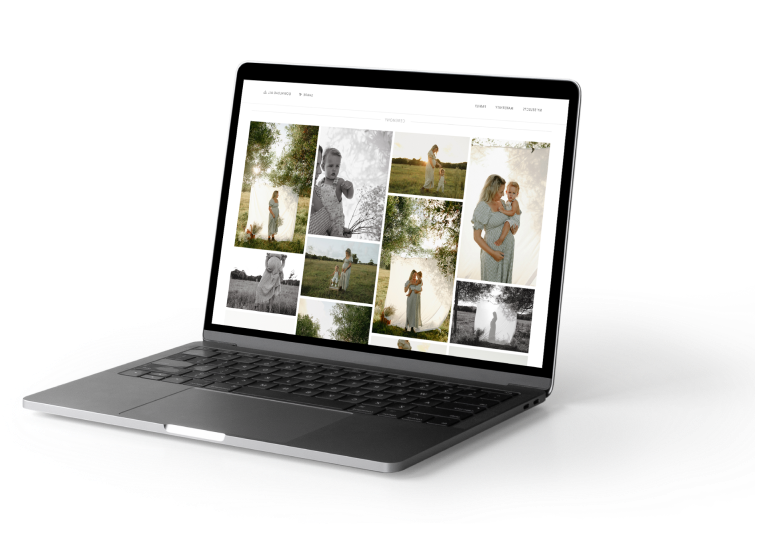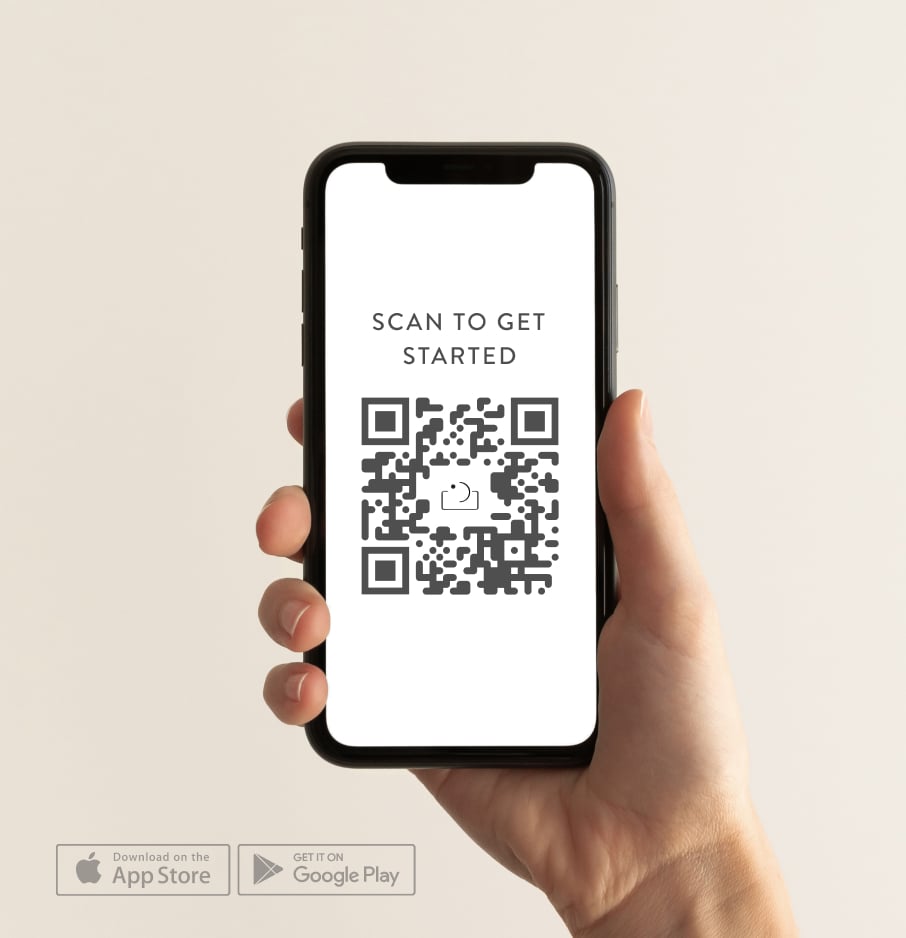If the idea of turning your photography side hustle into your full-time gig makes you feel sparkly and excited, read on. Taking the leap of faith and transforming your hobby into a job can be daunting, but these risks are often worth it if it means making money doing what you love.
So maybe you’re still in the ‘let’s-not-put-a-label-on-it’ phase, but if you’ve been shooting for a while, and family and friends who have seen your talent develop have been on your case about making it official, it might be time to step across the void and into the world of full-time photography. We know it’s a scary step to take. Speaking from experience, there are a lot of fears that can come up surrounding the prospect of failure, or losing the joy we feel when taking photos, or even around how others perceive us.
But with a little bit of preparation and strategic execution, you’ll be on track to begin to reap the benefits of an autonomous photography career. This guide is packed full of tips to get you started, but keep in mind that it’s simply an overview. We could go on for literally days unpacking the ins and outs of marketing, or self-worth, or business strategies, but for now let’s start with this so you can get all your ducks in a row before getting deep.

Chapter 1
Getting intimate
Start by getting clear on your ‘why.’ What is it that’s driving you to pursue photography as a business? Does the sound of the shutter make your heart flutter? Are you hoping to spend more time at home with your kids? Does the idea of helping people capture memories make your heart sing? Do you find photography to be the best way for you to channel your creative vision? Knowing the answer to these questions will help you prioritise your business into the future. For example, if you’re connected to the reason why, it’ll be easier to choose that photography job over a weekend away with friends and remember that this is a path you have chosen for a reason.
Shift your mentality to treating your hobby like a business. Take it seriously, cut out the time, and commit to it. If this means setting aside proper 9-5 work days and going to a coworking space to show up for work, do it. If it means mustering up a bit more grit, do it. Know you might lose some sleep in this transition, but the work you put in will pay off. Sometimes, the fear of taking the plunge can be extremely motivational. There’s nothing like a splash of cold water to get the old ticker moving along!
Dive in, know your worth, and charge accordingly. There’s something to be said for faking it till you make it, too. To stipulate before going any further: we fully encourage you to acquire the skills necessary before booking any shoots that make you feel like you’re out of your depth. But it’s always productive to push against the edges of your comfort zone, and exuding an heir of confidence will encourage your subjects to feel at ease, giving you the opportunity to capture them at their best.

Chapter 2
Identify your niche
What is it that you most enjoy shooting? Whether your jam is wedding photography, or surreal still-life, specialising will help people know what to expect of you, and help you shape your brand to best attract like-minded customers that appreciate who you are and what you do.
The more you shoot, the more you’ll get a sense for what lights you up. It seems inevitable that every photographer comes to understand at some point that not everyone is their client. Instead of spending energy trying to create content that speaks to everyone (and losing your mind in the process), funnel that time into speaking to the people you really want to work with. You’ll find the dream clients that want to work with you, and you alone. No more low-balling, no more email haggling, just you, your prices, your skills, and your niche.
Going niche makes you stand out, which reduces your competition, increases your visibility, stokes your creative fire, and hones your expertise. Not to mention lots of organic growth. Word of mouth is one of the most powerful ways to grow your business. There’s nothing that beats happy customers telling their friends how happy they were with the photos you took, and happy friends coming to you primed to love your work.
Note
Consider baking your photography niche into your brand name so that prospective customers can see clearly and immediately who you are and what you’re about.

Chapter 3
Build your portfolio
Curate a collection of your best images and start to build out your portfolio. If you’ve been a hobby photographer for a little while, chances are you’re swimming in beautiful images that are ready to be shared with potential clients (and the world). The key here is to make sure the images you choose represent your skill set but are also angled towards the work you hope to secure in the future.
- Aspire to what actually brings you joy.
- Envision the kind of shoots you’d like to do on a regular basis.
- Identify the gaps in your portfolio and organise creative sessions to fill them out. (Note: The way you refer to these sessions is important when considering how to value yourself. If you call them free, you’ll seriously undermine your worth as a photographer. But because the purpose of them is for your own creative gain, we’ve found it’s best to call them ‘creative sessions.’ Languaging is everything!) It’s best practice to get in the habit of shooting at least one a month, even after you’re making a solid living in the world of full-time photography. Creative sessions allow you to pivot your suite of images towards things you dream of shooting, and flex your photographic muscles without the constraints of client expectations.
- Treat yourself to a shootout. Like in the wild wild west, but also not at all like in the wild wild west. A shootout is where models, location scouting, wardrobes, stying, florals, and decor are often taken care of and you have the freedom to expand creatively without the added pressure of paid client expectations. Shootouts are a great opportunity to begin to germinate an understanding of the minutiae of a shoot, what’s involved, and re-ignite inspiration with various approaches as introduced by the hosts of the shootout as well as the other photographer attendees.
- Skill up further with workshops or mentor with a photographer you admire. Reach out to potential mentors. Butter them up. Tell them why you love their work and ask them if you can sit in on a shoot or lend a helping hand. There’s a wealth of information available on the internet, but workshops are a potent way for you to accelerate your knowledge of your craft in person, whether you’re chasing enlightenment in post-processing, or business, or lighting methods.
Chapter 4
Make a business plan
One of the most important things to consider when turning your hobby into a business, is actually creating a business. Read that sentence again. Yep, it’s a pretty obvious one but it’s crucial! You have to differentiate the way you do things. Once you’ve created a business Instagram, and painstakingly archived all of the photos of you and your dog, it’s time to think about the mechanics of making this work. While your shoots on the side may have given you nice little bonuses, it’s a completely different kettle of fish to have to determine what you need to earn week on week in order to pay your rent and bills and keep your family happy and fed.
Laying down a strong foundation for your growth means creating a business plan, and getting into the nitty gritty of numbers so you are able to better determine the financial demands of your life and the business. If you have a financial advisor, or an accountant, recruit them to help you outline the kind of financial structure you’re working towards, and what that looks like tangibly. Ask yourself:
- How many jobs per week do you have time to take on?
- How many jobs per week do you need to take on in order to live comfortably?
As a rule of thumb, having three or four months of income as a buffer is good insurance against stress (and reeking of desperation). If this decision impacts your family, be sure to sit down with your partner and outline your hopes and expectations, so you can feel supported in your decision emotionally and financially.
Part of your business plan should also address who your ideal clients are, so you can appropriately construct your pricing design to cater to their needs. What kind of packages best suit what they’re looking for? How can you make it easy for them to understand? How can you give the people what they want (while also giving yourself what you want)?

Chapter 5
Get your name out there (part I)
Getting your name out there can feel like one the most intimidating parts of turning your hobby into a business, and with so many different options on so many different platforms, we thought it’d be a good idea to ask our friends in the active Unscripted community on Facebook to share their insight, and boy oh boy do we have some hot tips for you! When you’re first starting out and trying to juggle the balls of money, time, and skill, it might not make lots of sense to outlay your life savings on complicated and expensive marketing methods. Here are some ways to advertise your skills without blowing out your budget.
- Get yourself a free Google Business Listing. If you’re like everyone else in the world, Google is the first port of call when trying to find more information on anything. The algorithm has changed to favour businesses, and Google is now putting Business listings above other organic listings. Beef out your profile with information about who you are and what you do. Upload photographs, and encourage clients to leave reviews for you.
- Use Instagram to your advantage. Beyond the world of vacuous cat videos and influencers on holiday, there is an authentic opportunity for you to share your images and connect you to your people. Find your dream clients, and start engaging with them on the platform. Note: Engagement is not a series of sparkly stars or salsa dance lady emojis. Take the time to instigate real conversation, and build your online community. Have a troll through profiles of other photographers in your area, and mine their hashtag usage for potential ones you can begin to use. Hold competitions and giveaways, encouraging your followers to take a more active role in your online presence and passing your name on through word of mouth. Offer referral discounts. Be curious, engaged, and focused. Don’t lose yourself to the infinite scroll, you’ve got too many other important things to do.
- Facebook, although exuding the impression that it has been relegated to exclusive use by long lost relatives and politically extreme Russians, is still quite an important force in the world of online marketing and you’d be remiss to overlook it. Create a business page, populate it with your beautiful imagery, and regularly submit your work to be featured on Unscripted Posing App, as well as numerous others.
- Submit your work to be published: Junebug Weddings, Photobug, Hello May and Dirty Boots and Messy Hair are all great websites to submit your work for a feature.
- Create a website. Wix and WordPress are both free and user-friendly platforms for you to share your portfolio, contact details, and personality with potential clients. Consider how you’d like to present yourself, and begin to design and configure a brand identity that best represents your business.
- Something we wish someone told us when we were first starting out is: start building your email list as soon as possible. This is your shortlist of potential clients who have been primed to love your work already. You’ve either worked with them before, or they’ve been interested enough to pass on their email and are open to receiving updates on your website, or blog, or desire to facilitate a day of mini-sessions. These guys are gold. MailChimp has a basic version free of charge, and will get you over the line if you’re just starting out and wanting to send basic newsletters from time to time.
- Utilise both digital and physical local listings. Craigslist, Kijiji, Gumtree, local notice boards, and school newsletters are all great and trusted ways to link you to your local community. Take it a step further by going to community events with your camera and posting your images to local sites to secure your reputation as a local photographer.
- If you’re interested in the wedding photography business, apply to showcase your work at local wedding shows and expose yourself to a network of like-minded people within the industry. It always pays off to establish connections in-person. Our social nature as human beings encourages person-to-person relationships.
- Don’t forget about the old school methods in all this new technology fuss. Business cards are a great way to make an impression, and flyers are a beautiful way to advertise your services.

Chapter 6
Get your name out there (part II)
Once you’ve worked your way through the monstrous list that constitutes the first pace of getting your name out there, you’ll have just begun to scratch the surface of Marketing 101. We’re not saying this to send you running for the hills, but it is important you get a sense for how rigorous marketing can be once you wade into the deep end. In the interest of maintaining some sort of emotional equilibrium at this fledgeling stage of your photography career, here is a short and sweet overview of what the next steps might look like once you’re ready to move in that direction.
- Once your website is up, look into SEO strategies to make sure it ranks high enough to leverage you profitable visibility. Blogs are great for this.
- Experiment with google or Facebook ads, and tune into analytics to gauge what gains traction with your audience and what doesn’t.
- Pitch stories to the appropriate photography websites and design magazines, establishing yourself as an authority within your niche.
- Expand your network to include local florists, venues, celebrants, planners, or stylists. Organising a collaborative shoot with multiple creatives sets everyone up for a win-win scenario. Cross-pollination in marketing means more reach (you tag them, they tag you), and everybody enjoys the bonus of new friends in creative places.
- Learn about your customer’s pain points and speak directly to them, tailoring your marketing strategies to articulate how your service will solve a problem in their lives.
Chapter 7
Find accountability
No man is an island. And motivation works in mysterious and unpredictable ways sometimes. Occasionally, it’s ok to lean on the people around you to fuel your progress. Recruit friends to hold you to your word, and articulate your goals to your partner or family.
Find yourself a photographer mentor, someone who is further ahead in their career, and offer to intern for a while to get a feel for the industry. If your goal is to shoot more weddings, offer your services as a second shooter for a professional wedding photographer and soak up all of the knowledge they gleaned from years in their field.
Break up your goals into categories: what’s easy, what’s achievable, what’s a bit of a stretch, and what’s your absolute dream? Don’t limit yourself.
First and foremost, don’t forget to fill your cup as an artist. In order to avoid burn-out and regret and the not-so-gracious side of yourself, be fierce about protecting the things that bring you joy.
Prioritise creative sessions and the constant pursuit of education. Take yourself on dates that stoke your inspiration.
Whether this means a solo walk on the beach, a night of salsa dancing, or a trip to the art gallery, your best work will flow out of you if you’re feeling relaxed and in step with the stimulation around you.
The main thing is that you’re doing what you love, in whatever capacity suits the way you want to live your life. Getting clear on what it takes to make the transition from photography as a hobby to photography as a business is a big part of maintaining perspective on what’s important for you.
Good luck from your friends at Unscripted. (Not that you’ll need luck once you’re done with these tips!)
Let's recap
- Make it official and commit to your business
- Do the numbers and nail down a practical goal
- Be courageous – get you and your images out there

lead your photography
sessions with confidence.


FAQ's
Can you do photography as a full-time job?
How do I find my photography niche?
What should be included in a photography portfolio?


